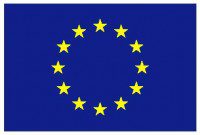Participants TransParcNet meeting 2014, Hainaut cross-border Nature Park (BE/FR) © Samuel Dohte
TransParcNet meeting 2014
Hainaut cross-border Nature Park (BE/FR)
2014 saw from 3rd to 6th June the 6th edition of EUROPARC’s TransParcNet meeting, the annual get-together of experts in cross-border cooperation of protected areas. It was the biggest TransParcNet meeting so far, with more than 70 participants joining EUROPARC this year in Saint-Amand-les-Eaux in the Hainaut cross-border Nature Park (BE/FR), who kindly hosted the event in their parks. During this year’s reunion, the participants had the chance to learn about funding possibilities from the EU for transnational cooperation, look into the Green Infrastructure Strategy of the European Commission paired with practical examples, and share good practices and innovative projects in different workshops.
Every year we are curious who will join the meeting and this year we were particularly pleased to see many new people in the audience. Hainaut cross-border Nature Park is composed of Scarpe-Escaut Regional Nature Park on the French side and Escaut Plaines Nature Park on the Belgian side. So no wonder, most first timers were representatives of French and Belgian protected areas but also colleagues from Italy and Poland attended. During the three day event we welcomed more than 70 participants from 15 different countries, amongst them protected area managers and staff, delegates of EU, national and regional authorities as well as NGOs.
The deputy mayor of Saint-Amand-les-Eaux opened the meeting, welcoming the participants to his town and region, a region characterised by its history and intensive coexistence of man and nature. Wet plains, farming plateaus and former mining sites form the landscape and are not only important from a biodiversity point of view, but also play a significant role as recreation zones for people. The presidents of both parks gave then a deeper inside into the record of their successful cooperation that benefits from a strong political support, because local and regional authorities are represented in the decision-making body.
The next day, the transnational bike excursion from the Belgian to the French part of the park, unfortunately had to be cancelled due to bad weather. Being well-prepared, the team of Hainaut cross-border Nature Park had of course a plan B up their sleeves. On a bus and walking excursion, the participants could get to know the parks nature and culture after all, with a visit to the parks headquarters and an archaeological outdoor museum. The afternoon session was dedicated to the new EU programming phase 2014-2020 and different frameworks in Europe of transnational cooperation. Jelena Stojovic, from DG Regional and Urban policies, gave insight into the funding priorities within the EU 2020 strategy and encouraged the participants to work with the new Interreg V programme, especially the ones for regional and territorial cooperation. The following presentations introduced to the participants different methods and awards available for cross-border protected areas, like the European Diploma, UNESCO World Heritage, UNESCO Man and Biosphere Programme, European Grouping of Territorial Cooperation.
On the second full day, EUROPARC and one of its certified Transboundary Areas delivered a session on Green Infrastructure to the participants. Connectivity is a key word in both the Green Infrastructure Strategy of the European Commission and transboundary cooperation of protected areas. By working across international borders, transboundary protected areas connect habitats and ensure ecological connectivity between natural areas in different countries. EUROPARC emphasized in that session, that transboundary protected areas can therefore be seen as a vital knot for implementing the Green Infrastructure Strategy of the European Commission, countering habitat loss and fragmentation in Europe.
Before heading out on a second excursion to discover the biodiversity of the former mining areas and wetlands in Hainaut cross-border Nature Park, the participants had the opportunity to join one of three workshops. Each workshop looked at cross-border cooperation of protected areas from a different angle, ranging from habitat management to local tourism development and steps to build a successful cooperating network. For more information on the workshop presentations and outcomes, please see the final report of the TransParcNet meeting.
Once again the TransParcNet meeting delivered an interesting and comprehensive portfolio and showed its value of a platform for experience exchange and networking. New connections between “old-timers” and “first timers” were established, learning from and inspiring each other to commonly advance the transboundary cooperation of European protected areas. EUROPARC is most thankful to the hosting parks for their sterling work and to the participants for their very valuable contributions to this meeting and new inspirations for the Transboundary Parks Programme.
The final report of the meeting is available in the download section at the end of this page. Presentations of the meeting can be accessed in the EUROPARC library. Pictures of the meeting can be found on facebook and flickr.
For more information, please contact us.
